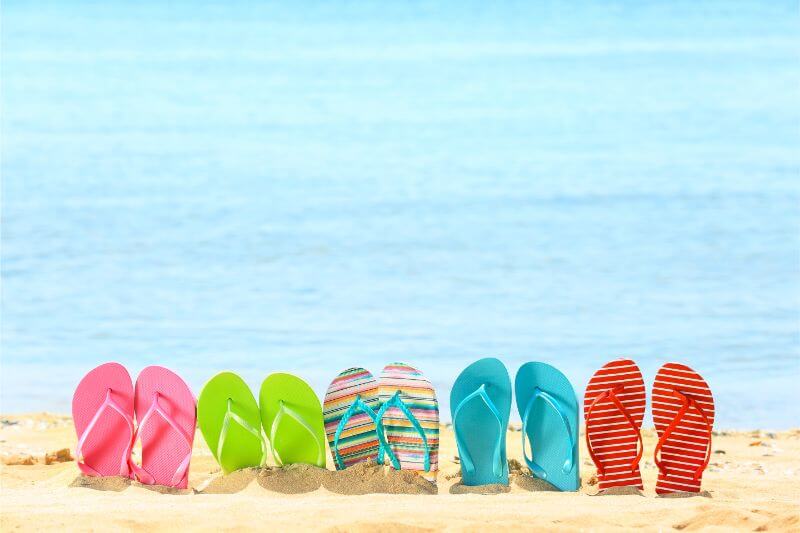Now we’re nearing the end of summer, your feet may well be feeling a little under the weather. And it may be thanks to our popular summer footwear choice: flip flops.
While an easy choice for around the garden or pool, if you’ve been enjoying the sunshine in a pair of flip flops, you may now notice some pain in your feet, ankles and lower legs, possibly drier skin than usual on your toes and heels, and even maybe some discoloured toenails or verrucae.
Here’s why flip flops aren’t necessarily the best choice for your feet during summer.
What’s the Problem with Flip Flops?
Wearing flip flops for long periods of time or for walking distances can cause a variety of different problems.
1. Lack of Support
Many styles of flip flops have flat soles with little or no padding and no contouring to fit the shape of the sole of your foot, which means a lack of heel cushioning and arch support. This lack of support can lead to foot pain along the sole of your foot – plantar fasciitis – or tendinitis, and even pain in the knees and hips from the lack of shock absorption.
2. Exposure to Germs
While wearing flip flops is better than wearing no shoes in public areas like swimming baths and changing rooms when it comes to avoiding contagions like verrucae, they don’t shield your feet from germs and infections that might be lurking in public places. Substances like soil or grit, which would usually be kept off your feet by enclosed shoes or more substantial soles, can work their way into cuts or grazes or under your toenails, which are perfect spots to spread infection.
3. Unnatural Gait
Due to a lack of fastenings or ankle straps to keep your flip flops in place, your feet have to adopt an unnatural grip-like tension to keep your flip flops from, well, flopping off! Walking in flip flops for long periods can result in severe pain in the shins and calves of your legs and along the top and bottom of your feet. Flip flops should be avoided for children of all ages, as they can cause permanent damage.
4. Risk of Injury
Thanks to the lack of cover provided by flip flops, you’re leaving your feet exposed to a higher risk of injury, such as cuts from sharp edges or surfaces, stubbing your toe or injury through dropping heavy objects directly onto your foot. They can also make you more prone to tripping or twisting, injuring your ankles and feet. This can be even more of a risk to your overall health if you suffer with diabetes.
5. Sun Damage, Dry Skin and Cracked Heels
When your bare feet are exposed to the elements and are unsupported, dry skin and cracked heels are inevitable. You may also experience sunburn and peeling skin on the tops of your feet if you don’t apply sunscreen effectively. An American study has found that feet are a common area to forget to apply sunscreen but can feel the full impact of the sun’s rays, making it a dangerous mistake to make.
Here at Feet By Pody we want you to enjoy healthy feet all year round. If your feet are feeling a bit sore or if you are suffering with a foot issue such as toenail infection or verruca, book an appointment online to visit one of our London podiatry clinics. We’ll treat the problem and give you advice and support to keep your feet in tip-top condition.

